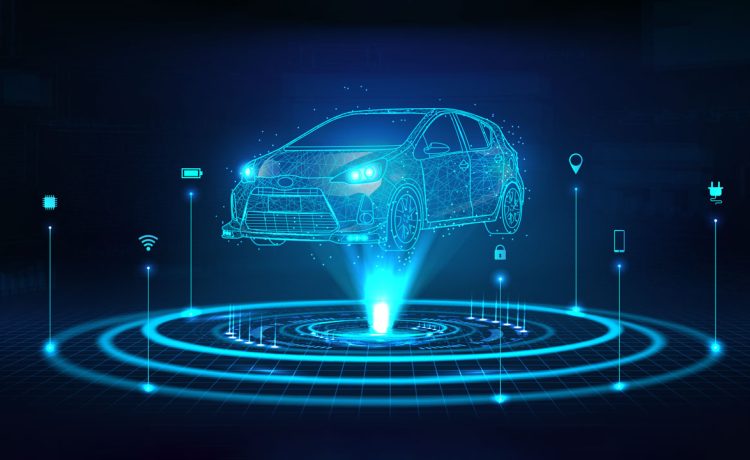The automotive industry is undergoing a radical transformation, driven by advances in technology, shifting consumer expectations, and the increasing urgency to address environmental challenges. From electric vehicles (EVs) to autonomous driving, the forces reshaping the sector are vast and complex. For industry players—from established automakers to innovative startups—the question is no longer whether transformation is needed but how to scale these changes effectively. In this beginner’s guide to automotive transformation, we will explore the key drivers, strategies, and challenges that companies must consider to achieve sustainable and scalable success in this rapidly evolving market.
1. Understanding the Forces Behind Automotive Transformation
To understand the scale of the transformation taking place, it is important to first look at the main drivers that are propelling change within the automotive industry.
Technological Innovation
At the heart of this transformation is the ongoing development of cutting-edge technologies. Electric vehicles (EVs) have become mainstream in a way that was unthinkable a decade ago, thanks in part to improvements in battery technology, charging infrastructure, and government incentives. Meanwhile, autonomous driving technologies promise to reshape not just the vehicle itself, but the way people move through the world. Technologies like artificial intelligence (AI), machine learning, and advanced sensors are making it possible to envision a future where cars can drive themselves, communicate with each other, and even adapt to road conditions in real-time.
Environmental Sustainability
The growing pressure to reduce carbon emissions is another key factor driving transformation. Governments worldwide are tightening regulations on emissions, and consumers are increasingly demanding greener, more energy-efficient vehicles. Automakers are responding by transitioning from internal combustion engines (ICE) to fully electric drivetrains and hybrid solutions. The shift is not just about reducing tailpipe emissions but also about developing sustainable supply chains and reducing the carbon footprint of vehicle production.
Changing Consumer Preferences
Consumer behavior is also evolving. Today’s consumers are more informed, connected, and sustainability-conscious. They are increasingly seeking vehicles that offer not only cutting-edge technology but also a seamless, personalized experience. Connectivity features such as over-the-air (OTA) updates, in-car digital assistants, and integrated smartphone connectivity are becoming standard. Consumers are also interested in the growing trend of car-sharing and subscription-based services, with many preferring access to a vehicle without the long-term commitment of ownership.
2. Strategies for Scaling Automotive Transformation
For automotive companies to transform successfully and at scale, they must employ strategies that address both the technological and operational challenges of this new era. Here are key strategies to consider:
A. Accelerating EV Production and Infrastructure
Electric vehicles are undeniably the future of the automotive industry, but scaling EV production requires overcoming significant challenges. One of the key hurdles is the supply of raw materials for batteries, such as lithium, cobalt, and nickel. Securing a sustainable and ethical supply chain for these materials is critical. In addition, companies must invest in manufacturing processes that can handle the high volume of EV production without compromising quality or cost.
Equally important is the development of the charging infrastructure necessary to support widespread EV adoption. Automakers must collaborate with governments and other stakeholders to expand charging networks, especially in underserved regions. This could involve setting up fast-charging stations at strategic locations, developing home charging solutions, and integrating charging technology directly into the vehicles.
B. Leveraging Data and Connectivity
As vehicles become more connected, the amount of data generated by each car will increase exponentially. Automakers that can harness this data effectively will be better positioned to offer personalized experiences, predict maintenance needs, and improve vehicle performance over time. Over-the-air (OTA) updates will enable manufacturers to send software updates to vehicles remotely, enhancing safety, performance, and customer satisfaction without requiring a visit to the dealership.
To scale these capabilities, automakers will need to build robust data ecosystems that integrate car sensors, cloud computing, and AI-powered analytics. This will require significant investments in both infrastructure and talent, particularly in the fields of data science and cybersecurity, to ensure that vehicles remain secure and privacy standards are upheld.
C. Embracing Advanced Manufacturing Technologies
The scale of automotive transformation also depends on how well manufacturers can adapt their production processes. Traditional manufacturing methods are often too rigid to accommodate the flexibility needed for mass-producing next-generation vehicles, especially electric models. To address this, automakers are turning to advanced manufacturing techniques such as 3D printing, automation, and robotics.
3D printing, for example, can be used to create lightweight, customized components for electric vehicles, reducing both production costs and time. Automation and robotics, on the other hand, can help streamline assembly lines, reducing labor costs and improving precision. The adoption of smart factories that use IoT (Internet of Things) devices to optimize production processes will be crucial for automakers that want to remain competitive in a rapidly changing market.
D. Investing in Autonomous Driving Technologies
Autonomous driving is one of the most exciting—and challenging—developments in the automotive industry. To scale autonomous vehicle technology, companies must focus on several key areas: sensor development, machine learning algorithms, safety standards, and regulatory frameworks. The market for self-driving cars is still in its infancy, but as technology advances, automakers will need to invest heavily in research and development (R&D) to keep pace with competitors.
Testing and validation are also critical. Autonomous vehicles must be rigorously tested in real-world conditions to ensure they can handle a wide range of driving scenarios. This will involve not just technological innovation but also collaboration with governments to develop appropriate regulations and safety standards for autonomous driving.
E. Fostering a Culture of Innovation and Agility
For automotive companies to scale their transformation, they must foster a culture of innovation. This requires a shift in mindset from traditional manufacturing processes to one that embraces flexibility, experimentation, and collaboration. Automotive companies should invest in R&D, foster partnerships with tech companies, and create innovation labs that allow teams to explore new ideas and technologies without the constraints of legacy systems.
Agility is also a crucial factor. As the industry continues to evolve rapidly, companies must be able to pivot quickly in response to changing market demands or regulatory shifts. This means developing a workforce that is not only highly skilled in traditional automotive engineering but also in software development, data science, and other emerging fields.
3. Overcoming Challenges in Scaling Automotive Transformation
While the path to scaling automotive transformation is promising, it is fraught with challenges. Some of the key obstacles companies will face include:
Supply Chain Disruptions
The global supply chain has been severely tested in recent years, and the automotive industry is no exception. From semiconductor shortages to delays in raw materials for EV batteries, disruptions can significantly affect production timelines. To mitigate these risks, companies will need to diversify their supply chains, develop contingency plans, and invest in local sourcing whenever possible.
Regulatory and Legal Barriers
Navigating the regulatory landscape for autonomous vehicles, electric cars, and connected technologies is complex. Different countries have different laws and standards, and staying compliant while scaling operations can be a challenge. Automakers must work closely with governments to shape policies that enable innovation while maintaining safety and fairness in the market.
Consumer Trust and Adoption
While technological advances are moving at a rapid pace, consumer trust in new technologies—such as autonomous driving and fully electric vehicles—remains a barrier to widespread adoption. Automakers need to demonstrate the safety, reliability, and long-term cost benefits of these innovations to build consumer confidence. Offering attractive pricing models, incentives, and comprehensive warranties can also help drive adoption.
4. Conclusion: A Roadmap for the Future
The automotive transformation that is unfolding today presents significant opportunities for companies that can adapt and scale. By embracing electric and autonomous vehicle technologies, integrating connectivity, optimizing manufacturing processes, and cultivating a culture of innovation, automakers can position themselves as leaders in the next era of mobility. However, to scale this transformation effectively, companies must address supply chain challenges, navigate complex regulations, and build consumer trust. The road ahead may be bumpy, but those who can drive forward with agility and foresight will find themselves at the forefront of a new automotive revolution. Whether it’s through EVs, autonomous driving, or next-gen manufacturing, the future of the automotive industry is one of boundless potential—provided companies are ready to accelerate into it.





